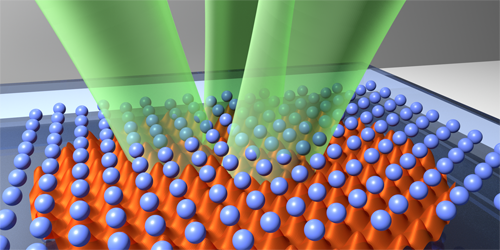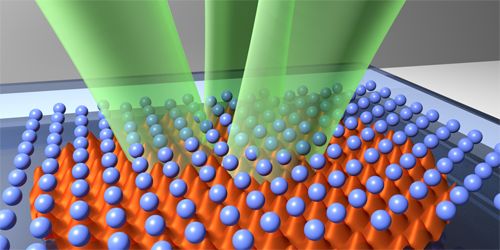Transition to Superlubricity in 2D
Superlubricity—a regime in which the static friction between two surfaces vanishes—could improve the performance and lifetime of nanodevices with moving parts, like nanopumps or medical nanosensors. The effect has been observed with several materials, including graphene. However, superlubricity theories are difficult to test in experiments because material parameters cannot be easily tuned. Now, Clemens Bechinger of the University of Konstanz, Germany, and colleagues have observed the transition to a superlubric regime in a model system made of plastic particles sliding over an optical potential. By providing new insights into the physical mechanisms that enable superlubricity, experiments using this model system could aid the development of nanodevices that take advantage of this frictionless state.
The team prepared a monolayer of colloidal plastic particles and placed them on top of an optical lattice—a grid of potential wells formed by three interfering lasers. This configuration mimics the interactions in a real system made of a material sliding on a surface. As they pushed the monolayer horizontally, the researchers measured the particles’ speed. They found that the particles normally required a minimum force to overcome static friction and start sliding over the lattice. However, when the depth of the optical lattice’s wells was tuned to a specific value, superlubricity kicked in, and the particles could slide upon the application of an arbitrarily small force. The data suggest that the onset of superlubricity can be described as a phase transition, as predicted by the so-called Aubry theory. This theory has been formulated and tested only for ideal 1D chains of atoms and at low temperatures, but the authors’ experiments demonstrate that it applies to much more practically relevant situations.
The research is published in Physical Review X.
–Sophia Chen
Sophia Chen is a freelance writer based in Tucson, Arizona.





